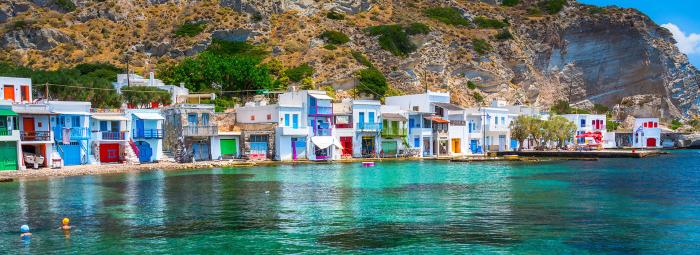
Island facts
Milos is a volcanic island in the Aegean Sea, located at the southwestern tip of the Cyclades. It covers an area of 151 square kilometers and is known for its crescent shape and rugged landscapes. The island has 88 kilometers of coastline and is home to one of Greece’s largest natural harbors, Adamas. Milos is famous for its rich mineral resources, including obsidian, perlite, and bentonite, and has a history of mining dating back to prehistoric times.
As part of the Milos electrical system, the island remains non-interconnected with the mainland grid, relying on local energy production. In 2023, the total renewable energy penetration in the Milos electrical system was approximately 13.9%, with an electricity demand of around 42.3 GWh. When factoring in heating, cooling, and transportation, the total annual energy demand reaches approximately 159 GWh.
With a strong commitment to sustainability, Milos is actively working towards a cleaner and more efficient energy future while supporting local economic development and environmental protection. Milos focuses on expanding its renewable energy sources and improving energy efficiency to achieve energy resilience and autonomy. The island has already received funding for an Electric Vehicle Charging Plan (EVCP), supporting the installation of public EV charging stations, and is also implementing a Sustainable Urban Mobility Plan (SUMP) and an Urban Accessibility Plan (AAP) to enhance transportation infrastructure.
Through the Follower Islands programme, Milos aims to establish a sustainable, resilient, and autonomous energy system that aligns with the needs of the local population while reducing environmental impact. By leveraging strategic planning and financial support, Milos is committed to transitioning towards a cleaner energy future, ensuring long-term sustainability and economic growth for the local community.
Milos is part of the non-interconnected electrical system of Milos. The electrical system consists of both Milos and Kimolos islands, with Milos interconnected to Kimolos via four submarine cables (1x50 Al, 20 kV).
